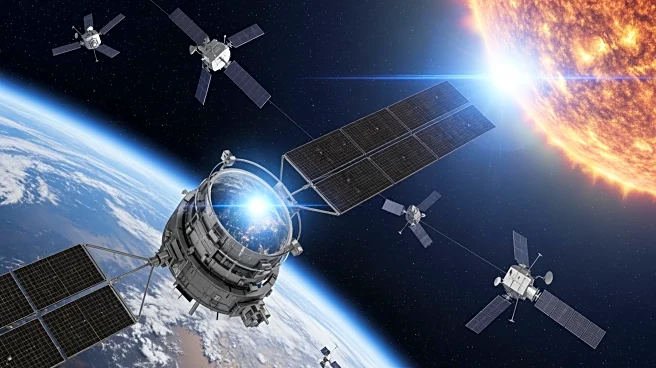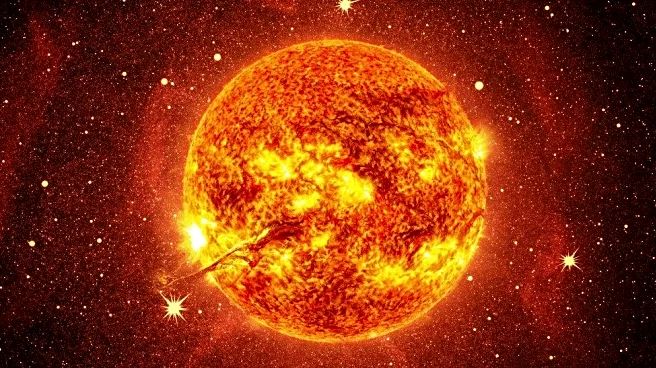What's Happening?
The National Oceanic and Atmospheric Administration (NOAA) is closely monitoring a series of solar flares that have disrupted radio communications across sunlit areas of the globe. The Space Weather Prediction
Center recorded a moderate solar flare from the sun's AR 4274 region, following two larger flares that affected North and South America, as well as regions from the North Pacific Ocean to Australia. These flares have released coronal mass ejections, which, although not directly headed towards Earth, may interact with solar winds to cause geomagnetic storm conditions.
Why It's Important?
Solar flares can significantly impact communication systems, navigation, and power grids, highlighting the need for robust monitoring and preparedness strategies. The potential geomagnetic storms could lead to more vibrant auroras but also pose risks to infrastructure. Understanding solar activity is crucial for mitigating disruptions and ensuring the resilience of technological systems that rely on satellite and radio communications.
What's Next?
NOAA will continue to analyze the coronal mass ejections to assess any Earth-directed threats and anticipate geomagnetic responses. Stakeholders, including communication and energy sectors, may need to prepare for potential disruptions. The agency's ongoing monitoring will inform future strategies to protect critical infrastructure from solar-induced disturbances.
Beyond the Headlines
The event underscores the importance of international collaboration in space weather research and the development of global response frameworks. As solar activity increases, the need for comprehensive policies to safeguard against space weather impacts becomes more pressing, influencing both scientific research and public policy.












